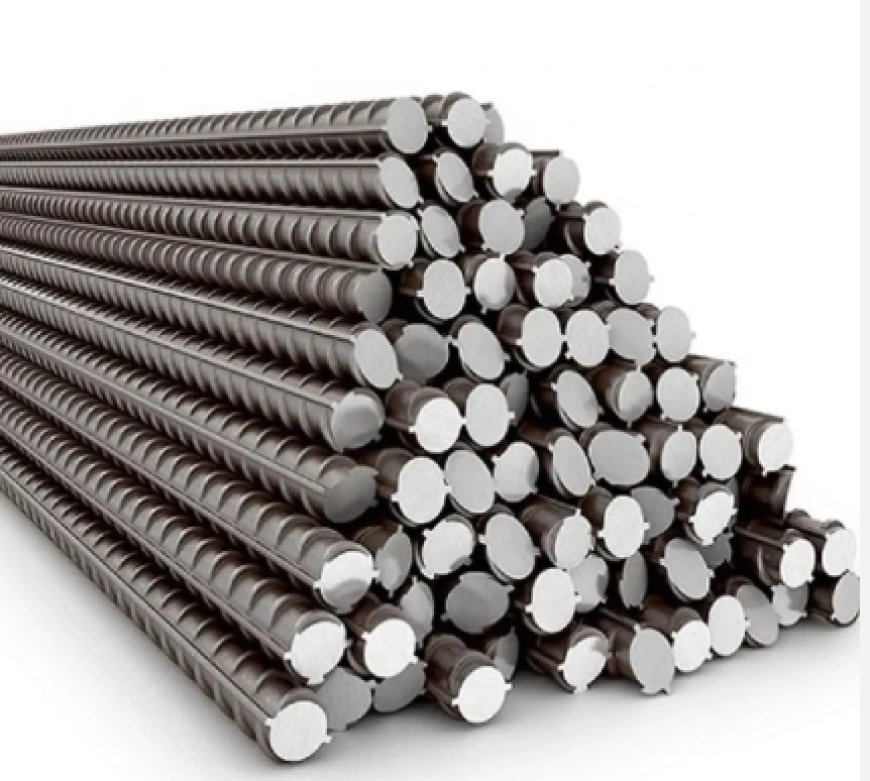TMT Bars Manufacturing and Maintenance: Key Factors for Durable Construction

TMT (Thermo-Mechanically Treated) bars play a crucial role in the construction industry, offering the strength, flexibility, and durability needed for modern infrastructure. From residential buildings to large-scale bridges and roads, TMT bars are an essential material for ensuring long-lasting structures. This article will explore the manufacturing process of TMT bars, highlight the factors contributing to their quality, and discuss the maintenance practices that help prolong their effectiveness and ensure the safety of constructions.
Manufacturing of TMT Bars: A Step-by-Step Process
The production of TMT bars involves a detailed, multi-step process that ensures the bars possess the desired properties of strength and flexibility. Here is an overview of the key stages in TMT bar manufacturing:
1. Preparation of Raw Materials
The process starts with preparing raw materials such as iron ore, limestone, and coking coal. These materials are melted in a blast furnace to create molten iron. This molten iron is further processed to produce steel by removing impurities and adding essential elements like carbon, manganese, and silicon to achieve the required composition for TMT bars.
2. Billet Casting
The molten steel is poured into molds to form billets—solid blocks of steel. These billets are around 6 meters long and 150 to 200 mm wide. This casting stage ensures a uniform structure, which is critical for further processing into high-quality TMT bars.
3. Reheating and Rolling
The billets are then heated in a furnace to temperatures of around 1200-1300°C. This makes the steel malleable and ready for shaping. The heated billets are passed through a series of rollers that gradually shape them into long, thin bars, which are then cooled down for the next treatment stages.
4. Quenching and Tempering
The key process that defines TMT bars is the thermomechanical treatment. After rolling, the bars are rapidly cooled using water (quenching). This rapid cooling hardens the outer surface while keeping the inner core of the bar soft, resulting in the characteristic strength and flexibility of TMT bars. The bars are then tempered (slowly cooled) to relieve internal stresses, further improving their toughness.
5. Quality Control and Testing
Before TMT bars are made available for use, they undergo strict quality control testing. This includes tests for tensile strength, elongation, bendability, and corrosion resistance. Only bars that meet the industry standards are considered suitable for construction use.
Importance of Maintenance for TMT Bars
Even though TMT bars are designed to be durable and long-lasting, proper maintenance throughout their life cycle is essential to preserve their strength and functionality. Here are a few maintenance practices that help keep TMT bars performing optimally:
1. Proper Storage and Handling
How TMT bars are stored and handled at the construction site is crucial for maintaining their quality. Bars should be stored in dry, sheltered conditions to prevent exposure to moisture, which can lead to rust. Care should also be taken when handling the bars to prevent bending or damaging them before they are used in the construction process.
2. Pre-Installation Checks
Before installing TMT bars, it is essential to inspect them for any visible damage that may have occurred during storage or transportation. Any damaged bars should be replaced to ensure that they can perform their function effectively once incorporated into the structure.
3. Correct Installation Practices
Proper installation of TMT bars is crucial for ensuring the strength and stability of the structure. The bars should be placed in accordance with the approved structural design, ensuring the correct spacing between them to allow for proper concrete flow. Secure binding with high-quality wire and maintaining proper positioning during installation ensures the overall stability of the structure.
4. Post-Construction Maintenance
After construction, it is important to regularly inspect the structure to ensure that the TMT bars are still functioning as intended. While TMT bars are corrosion-resistant, structures in coastal or humid areas may require additional protection from the elements. This can include the application of anti-corrosion coatings or rust inhibitors on exposed bars to prolong their lifespan and prevent deterioration.
5. Protection Against Corrosion
In areas where there is a higher risk of corrosion, such as near seawater or in high-humidity environments, it is essential to use additional protective coatings on the TMT bars. This helps shield the bars from rust and corrosion, ensuring that the structure remains safe and strong over time.
Conclusion
The manufacturing of TMT bars involves a precise process that results in a product with excellent strength, flexibility, and resistance to corrosion. However, for these bars to continue performing optimally throughout their service life, careful handling, installation, and maintenance are necessary. By following the best practices for storage, installation, and post-construction care, construction projects can benefit from the full potential of TMT bars, ensuring safe and long-lasting structures.
For more information on the best quality TMT bars and competitive prices, visit www.steeloncall.com or contact us at 18008332929.
#TMTBars #ConstructionMaterials #BuildingDurability #SteelManufacturing #StructuralSafety
What's Your Reaction?























